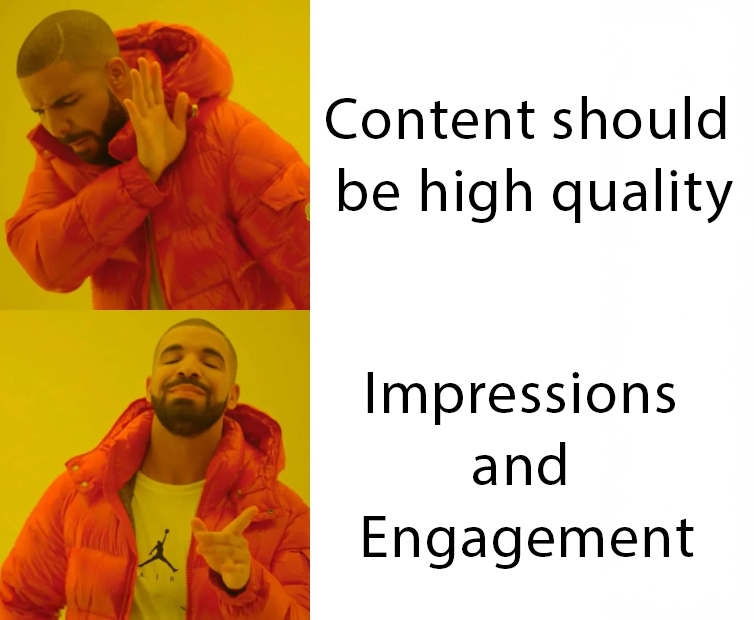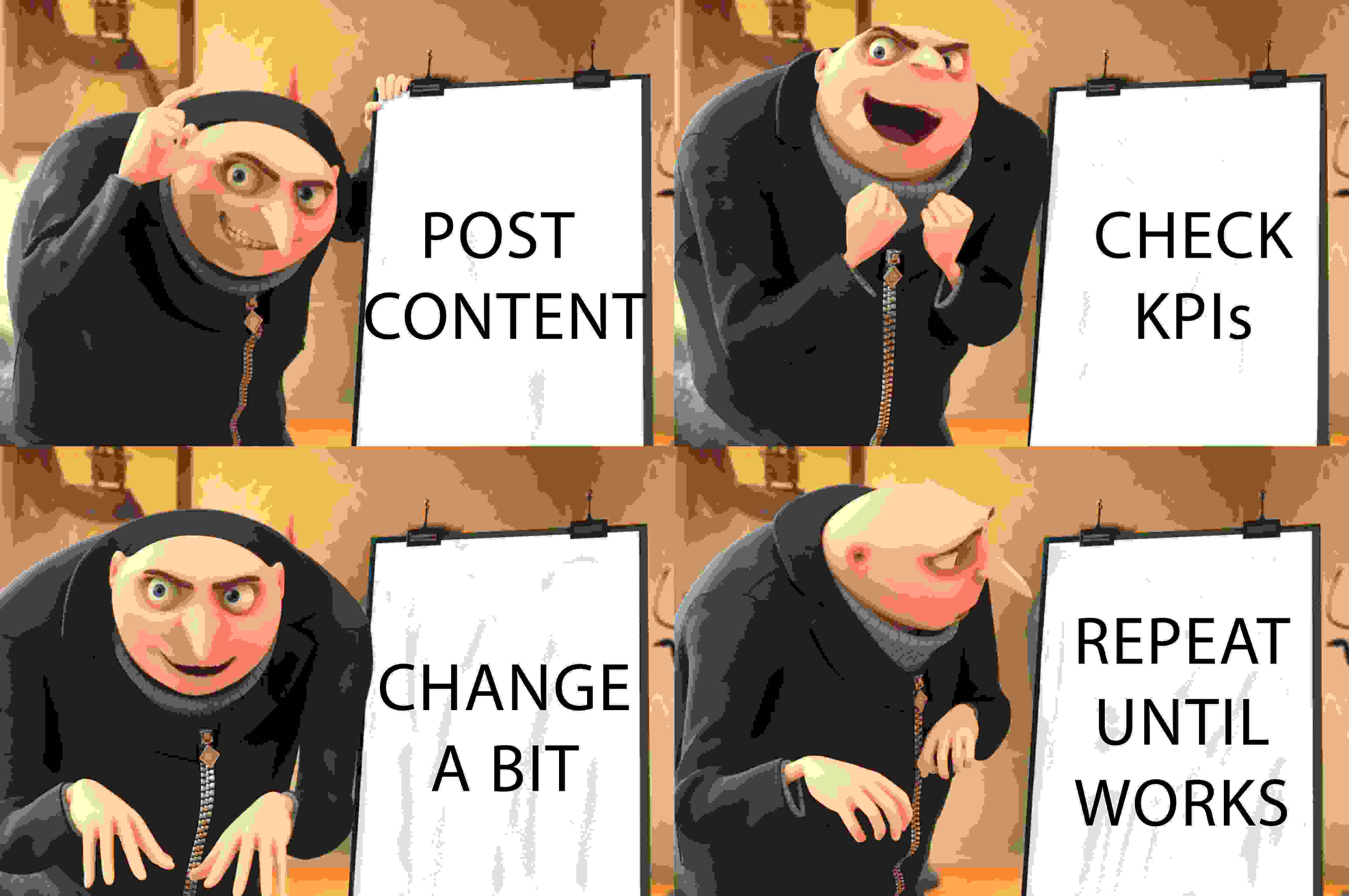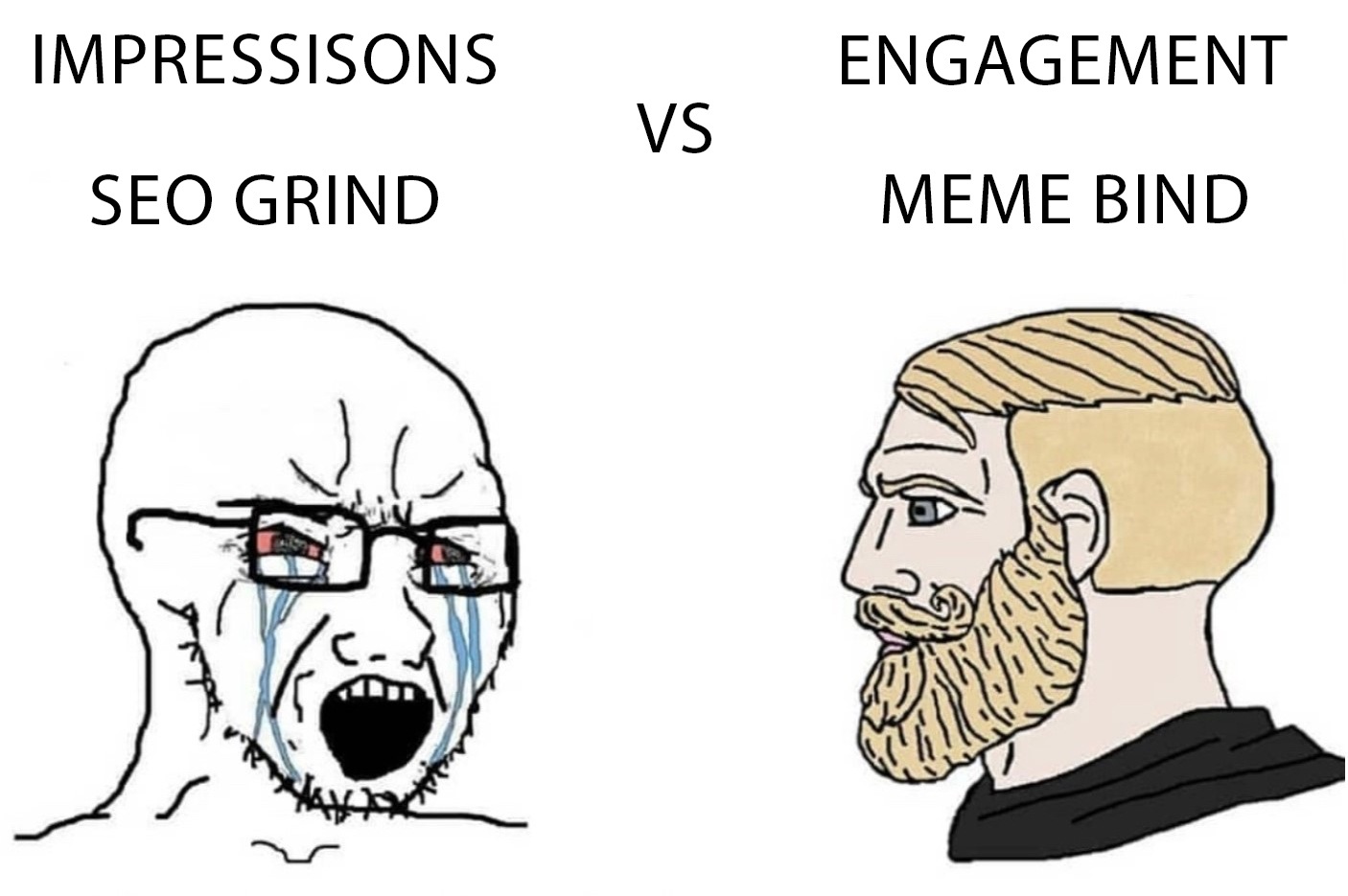What is high quality content?
Marketing is crucial for success, and organic content is the backbone of any marketing strategy. I covered the basics in my marketing guide, but let’s get practical here: having a blog or posting on X or LinkedIn, how do you know if your content is good enough? What are the signs? How can you improve? I’ve asked myself these same questions, and we’re going to dive into the answers together.

First things first. When you’re looking for answers, you usually Google it, right? That was my strategy, too. I scrolled through tons of articles, all repeating the same old mantra: “content should be high quality.” Not exactly groundbreaking advice. After a few failed searches and plenty of vague tips on “quality content,” I figured, why not write my own guide.
What is KPI?
Coming from an engineering background, I always thought we could measure everything—or almost everything. If you can measure it, you can improve it, right? Business even has a term for this: KPI (key performance indicator). It’s just a way to track success. Sometimes it’s simple. Take a runner, for example—you can measure their success by timing how fast they finish a race. The faster the time, the better the performance. Easy. But in marketing, things get tricky. Why? Because there are so many factors to juggle, and figuring out which ones actually matter is a whole different challenge.
Let’s get practical. Here’s what I’m up to: figuring out how to boost my newsletter and LinkedIn. In my marketing for dummies guide, I talked about paid promotion, and LinkedIn makes it easy—just pay to get your posts seen. Simple, but it’ll cost you. Cool thing is, LinkedIn even suggests which KPIs to track, and I’m gonna share those with you.
Content quality KPIs
So when you create a LinkedIn campaign for your personal post, you have to choose your Group Objective. For my case, there are two main options: Brand Awareness and Engagement. Let’s take a look at how LinkedIn describes them:
- Brand Awareness – Reach more people with your post
- Engagement – Increase social engagement and page followers
At first, I couldn’t figure out the difference, so I dug a little deeper and realized it’s all about impressions and engagement:
- Impressions – How many times people see your post
- Engagement – How many actions people take with your post
Basically, if you wanna reach as many viewers as possible, go with impressions. If you want them to do something—comment, share, repost, subscribe—then you definitely wanna choose engagement.
How to improve content quality?
So now you know—Impressions and Engagement are your best friends for judging content quality. On LinkedIn, they’re easy to measure; just check your dashboard for the metrics you need. Next question I’m asking myself (and you should, too): how do we make those numbers bigger? If impressions and engagement are climbing, you’re on the right track, right?
Here’s the catch I hate about marketing: there’s no direct answer. No step-by-step guide to improving content quality. But we do have a framework to test things out. Here’s the deal:
- Post a few times.
- Track your KPIs for trends.
- Change something, post again.
- See if trends go up (awesome, keep it up) or down (adjust your strategy).
- Repeat.

It might seem obvious, but not to everyone. This is what I use to improve content quality, and I’ll keep sharing what works (and what doesn’t) as I go.
SEO and content quality
I’ve been blogging for a month and a half, tracking engagement and impressions with Google Analytics and Search Console. So far, no one’s found me through search—ouch. But hey, I have metrics! I can experiment, make changes, and track results.
From my marketing basics, I know:
- Search = impressions (appealing to search engines)
- Feed = engagement (appealing to people)
To boost impressions, you need to play nice with search engines. To boost engagement, you need to appeal to people. The tricky part? Search engines don’t mimic people perfectly, so going all-in on engagement can actually hurt your impressions and vice versa.

How’s that? Well, it helps to remember the main difference between us and search engines. We’re emotional. We process content with feelings. Search engines just process information—nothing more. If you go heavy on jokes and memes, your audience might love it, but search engines could be clueless. My early posts, like “You should become a clown” and “Make them love your sh...t,” got laughs and good feedback from friends but got no love from the search engine. Search engines don’t get that “become a clown” means “build your personal brand.” It’s a trap I fell into. I focused so much on engagement that I forgot about SEO.
Conclusion
High-quality content means high KPIs—impressions and engagement. For impressions, focus on SEO. For engagement, focus on making your content attractive to people. Sometimes, there’s a trade-off, so balance is key. If you need new viewers, cozy up to the search engine with clean, straightforward posts—even if it means sacrificing some fun. But if you’ve got an audience to keep engaged, go ahead and throw in the memes and jokes. Play to their emotions. Tap into their desires.